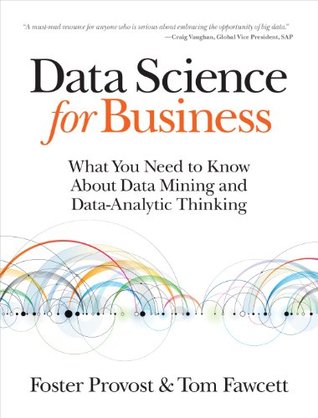More on this book
Community
Kindle Notes & Highlights
The sort of decisions we will be interested in in this book mainly fall into two types: (1) decisions for which “discoveries” need to be made within data, and (2) decisions that repeat, especially at massive scale, and so decision-making can benefit from even small increases in decision-making accuracy based on data analysis.
credit cards essentially had uniform pricing, for two reasons: (1) the companies did not have adequate information systems to deal with differential pricing at massive scale, and (2) bank management believed customers would not stand for price discrimination.
modeling profitability, not just default probability, was the right strategy.
quantitative demonstrations of the value of a data asset are hard to find, primarily because firms are hesitant to divulge results of strategic value.
Sociodemographic data provide a substantial ability to model the sort of consumers that are more likely to purchase one product or another. However, sociodemographic data only go so far; after a certain volume of data, no additional advantage is conferred.
data analysis is now so critical to business strategy.
They employ data science teams to bring advanced technologies to bear to increase revenue and to decrease costs.
With an understanding of the fundamentals of data science you should be able to devise a few probing questions to determine whether their valuation arguments are plausible.
Classification, regression, and causal modeling generally are solved with supervised methods. Similarity matching, link prediction, and data reduction could be either. Clustering, co-occurrence grouping, and profiling generally are unsupervised.
data mining is an exploratory undertaking closer to research and development than it is to engineering.
Team members may be evaluated using software metrics such as the amount of code written or number of bug tickets closed. In analytics, it’s more important for individuals to be able to formulate problems well, to prototype solutions quickly, to make reasonable assumptions in the face of ill-structured problems, to design experiments that represent good investments, and to analyze results. In building a data science team, these qualities, rather than traditional software engineering expertise, are skills that should be sought.
formula that evaluates how well each attribute splits a set of examples into segments, with respect to a chosen target variable. Such a formula is based on a purity measure. The most common splitting criterion is called information gain, and it is based on a purity measure called entropy.


